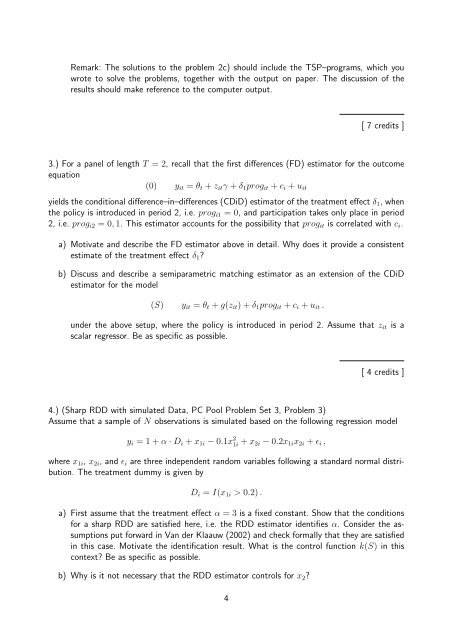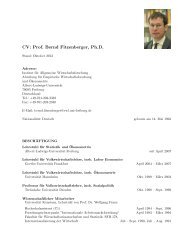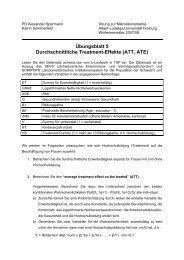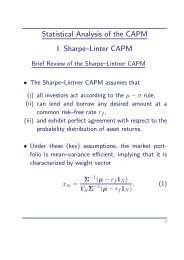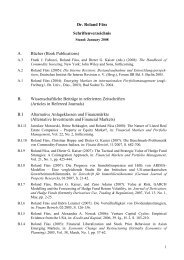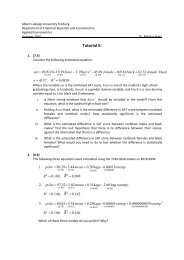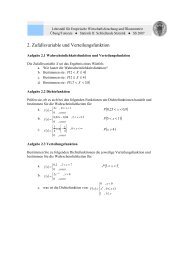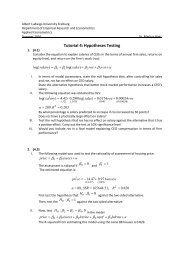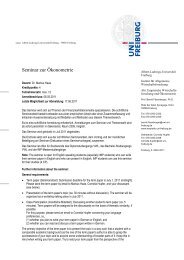Homework 2
Homework 2
Homework 2
You also want an ePaper? Increase the reach of your titles
YUMPU automatically turns print PDFs into web optimized ePapers that Google loves.
Remark: The solutions to the problem 2c) should include the TSP–programs, which you<br />
wrote to solve the problems, together with the output on paper. The discussion of the<br />
results should make reference to the computer output.<br />
[ 7 credits ]<br />
3.) For a panel of length T = 2, recall that the first differences (FD) estimator for the outcome<br />
equation<br />
(0) yit = θt + zitγ + δ1progit + ci + uit<br />
yields the conditional difference–in–differences (CDiD) estimator of the treatment effect δ1, when<br />
the policy is introduced in period 2, i.e. progi1 = 0, and participation takes only place in period<br />
2, i.e. progi2 = 0, 1. This estimator accounts for the possibility that progit is correlated with ci.<br />
a) Motivate and describe the FD estimator above in detail. Why does it provide a consistent<br />
estimate of the treatment effect δ1?<br />
b) Discuss and describe a semiparametric matching estimator as an extension of the CDiD<br />
estimator for the model<br />
(S) yit = θt + g(zit) + δ1progit + ci + uit .<br />
under the above setup, where the policy is introduced in period 2. Assume that zit is a<br />
scalar regressor. Be as specific as possible.<br />
[ 4 credits ]<br />
4.) (Sharp RDD with simulated Data, PC Pool Problem Set 3, Problem 3)<br />
Assume that a sample of N observations is simulated based on the following regression model<br />
yi = 1 + α · Di + x1i − 0.1x 2 1i + x2i − 0.2x1ix2i + ϵi ,<br />
where x1i, x2i, and ϵi are three independent random variables following a standard normal distribution.<br />
The treatment dummy is given by<br />
Di = I(x1i > 0.2) .<br />
a) First assume that the treatment effect α = 3 is a fixed constant. Show that the conditions<br />
for a sharp RDD are satisfied here, i.e. the RDD estimator identifies α. Consider the assumptions<br />
put forward in Van der Klaauw (2002) and check formally that they are satisfied<br />
in this case. Motivate the identification result. What is the control function k(S) in this<br />
context? Be as specific as possible.<br />
b) Why is it not necessary that the RDD estimator controls for x2?<br />
4


